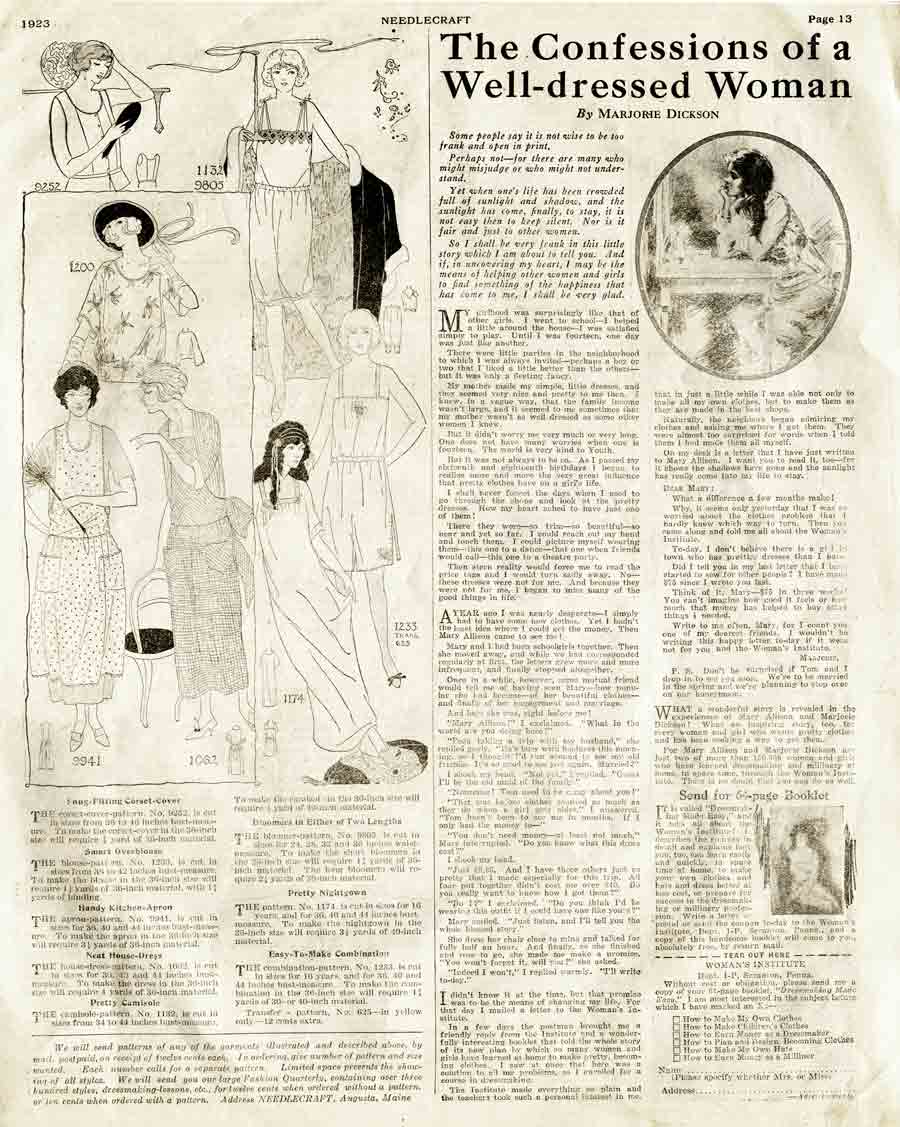While I was flipping through a nearly antique Needlepoint magazine from February 1923, I came across an advertorial that sparked my curiosity to learn a little more about the history of advertorials.
If you collect vintage ephemera, no doubt at some time you’ll come across advertorials in your paper clipping adventures.
An advertorial is a type of advertisement that comes disguised as an editorial or piece of news. We see them today in all types of media – whether it’s an article on a website or sponsored content in a video.
Advertorials are often highly effective for the advertiser because people do not realize they are ads or that they are being sold to – it comes in the form of an article full of useful information and thoughtful reflections about a topic.
In today’s world, we call this “Content Marketing” — and it’s an entire industry now. Many colleges and universities actually offer courses and certifications for content marketing, such as this digital marketing certification at Penn State.
Up until today, I would have thought advertorials were a relatively more recent form of advertisement. I would have guessed that maybe they emerged sometime in the 1960’s and did not gain popularity until the late 1990’s. Finding this article in a 1923 magazine made me realize their use dated a lot farther back than I may have realized!

It had me fooled and I’m a professional blogger with 15+ years of experience in digital marketing. I also studied journalism and communications in college!
After I realized it was an ad, it sparked my curiosity – what is the history of advertorials? How long have they really been around?
I found this article at PaleoFuture, which gives us a fabulous look at the 150+ year history of advertorials — and some insight into the journalism ethics quandary they create.
The advertorial I stumbled across – from February 1923 – was published just a little 8 years after the Federal Trade Commission Act passed into law on September 26, 1914.
Section 5 of the Federal Trade Commission Act (FTC Act) covers all things unfair and deceptive advertising and regulated that advertisements must be clearly labeled when not obvious. This is why at the bottom of my antique advertorial you see the teeny-tiny italicized word: Advertisement.
It’s also why at the top of many of the posts on this website you might find a very obvious affiliate disclaimer.
The internet was a bit of a wild, wild west for the longest of times – but eventually, the FTC did start to crack down on digital publishers just as they did on the newspaper and magazine publishers in 1914 and beyond.
There’s such a blurry line in online publishing between what could or could not be considered advertorial content, I often err on the side of caution and show that disclaimer on every single article I publish, even when the article doesn’t include a single affiliate link.
Resources to Learn More About the History of Advertorials
Anyways, if you might be looking for some resources on the history of advertorials or even advertising in general – here are some great things to check out.
The Ephemera Society: I love the ephemera society and if you love all things ephemera, of course they are the best place to research any kind of ephemera you might like to collect. Members get all kinds of great resources to learn about the history of different things.
Museum of Brands: While you likely won’t find anything there specific to this advertorial, this is a museum that specializes in documenting the many different types of advertisements throughout history.
13 Good Ideas From Dead Copywriters: Copyblogger is a site dedicated to teaching and inspiring people about writing words that sell. To quote the article, “Advertising is an ancient art.”
While I can’t say I love advertorials, because really, who likes being tricked into being sold to – but I will say I find them quite interesting when you study them in the context of historical advertising.
You can learn a lot about what types of things people were interested in and what points advertisers used to make their products more marketable. And of course, if you’re a marketer or advertiser of any kind, studying the history of successful ads can definitely give you some ideas of what works and what doesn’t.